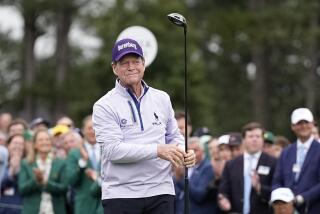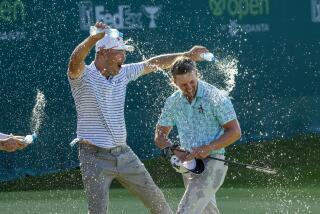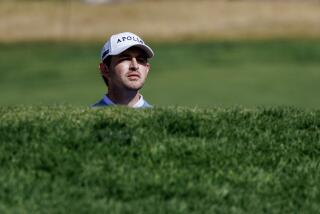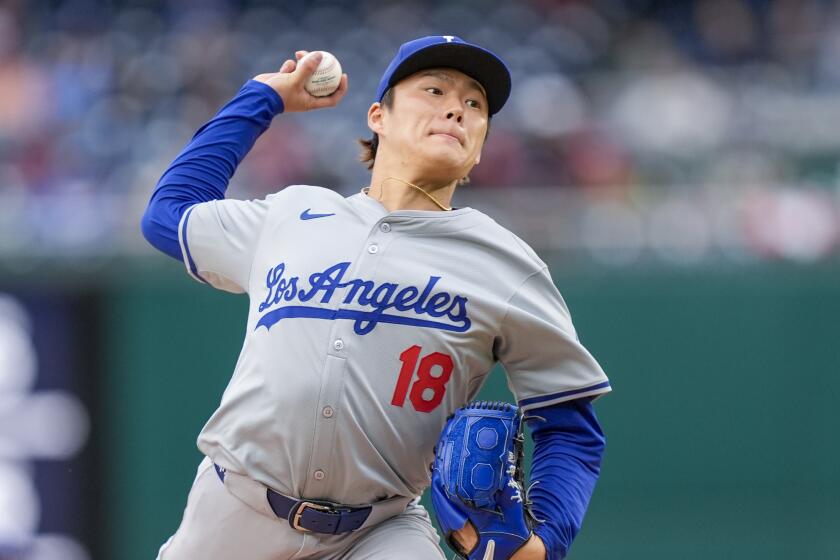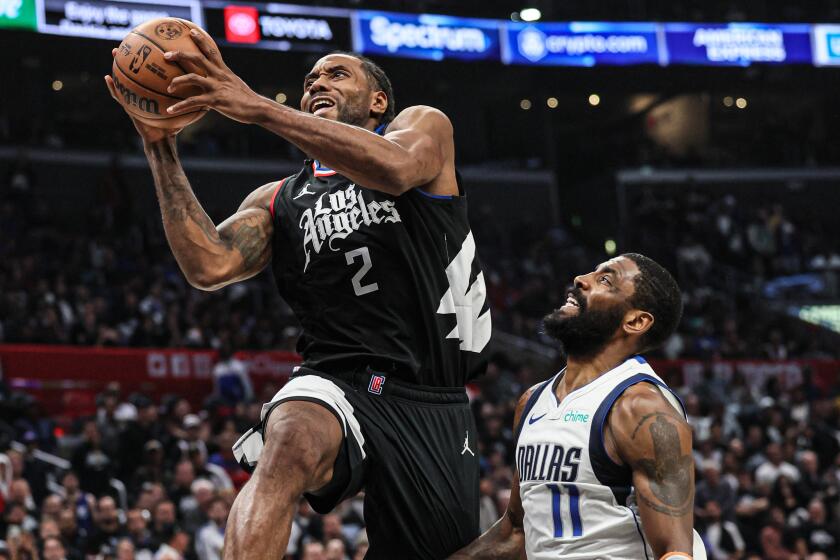Notah Begay III charts a course back to the PGA
Once upon a time, Notah Begay III was a big story in golf. Now, a decade or so later, he hopes to become one again.
“I was 27,” he says. “It was a month after I played for the U.S. in the President’s Cup. I had gotten into the top 20 in the world rankings, had won four tour events and close to $4 million. I made it to No. 15 in Ryder Cup points.”
Then he blew out two discs in his back.
“Now, it is 11 years later, and I wouldn’t have changed a thing.”
He says, even though he kept trying comebacks on the PGA Tour, that it took him six or seven years to get his back in “manageable condition.” He didn’t have surgery, and when asked about that, he answers a la Frank Sinatra. “I did it my way,” he says.
In those 11 years, he has disappeared from winner’s circles, but not from golf.
Begay still lives in Albuquerque, near where he grew up. He got married six years ago, has two children and says, “That’s the best thing you can be part of.”
He does on-air commentary work for the Golf Channel and loves it.
“My job there is to create opinion,” he says. “I don’t want to be on the fence. Broadcasting is about stimulating discussion.”
Part of his story is that he is a Native American, the only full-blooded one to ever play in the Masters, he says. He has a foundation and a consulting business that furthers several Native American causes — among his biggest backers are the San Manuel Indians — and builds golf courses with better access for Native Americans.
His roots extend to his grandfather, Notah Begay I, who was one of the code talkers sent to World War II with the Marines and asked to communicate key messages in their Navajo language. This was the group that inspired the 2002 movie “Windtalkers.”
His father, Notah Begay II, was a Marine, and his brother, Greg, served two tours with the Marines in Iraq.
Another part of his story, the one that still gets the most attention, is that he is a Stanford graduate and former college teammate of Tiger Woods. They remain close and — because everything about Woods remains a great fascination to a public that was mesmerized by his rise and now seems unable to let go during his fall — Begay is often identified by the phrase “friend of Tiger Woods.”
He doesn’t reject that or feel minimized by it.
“I love him like a brother,” Begay says. “He is family to me.”
Begay says they talk once a week and that he still visits Woods frequently.
“People don’t see the side of him that I do,” Begay says. “When I am coming to visit, he goes to the grocery store himself and shops for me, gets me the things I like, yogurt and snacks.”
That friendship could have put him in difficult situations on the Golf Channel, as Woods’ life and golf game went to pieces.
“The Golf Channel was very fair in the way it positioned that subject matter for me,” Begay says. “They kept the playing field level. And I’ve been critical of Tiger on the air. He understands I have a job to do. He knows he made mistakes, and there was a time when that was fair game to discuss. But now, it’s on to golf.”
As it is for Begay, 39, who played in the desert this week in a Canadian Tour event, the Desert Dunes Classic. Begay says he used it to stay sharp for the PGA Tour qualifying school, which begins Nov. 16 in Florida and graduates a reduced field to the finals at PGA West in La Quinta. Clearly there is more work to do. He shot 72-78 and didn’t make the cut Friday.
“I hope to play a healthy season next year,” he says. “The goal is to get back to full-time status. I’ve been so far removed for so long from that elite level. The first step is to just get back there. To get a job for all of 2013, now that would be fantastic.”
He knows his buddy Woods will be there.
“He just needs to get past a certain threshold,” Begay says, “and he’ll be back.”
Even if that doesn’t happen, Begay can appreciate the impact his friend has had, and still has, on the game. It was easy to see when Woods played in Begay’s NB3 Foundation event Aug. 31 in Verona, N.Y.
“Usually, we will have maybe a million and a half media impressions,” Begay says, referring to Web hits, TV mentions and newspaper stories. “When Tiger comes —and he plays every time I ask him to — our media impressions on the event are closer to 25 million.”
More to Read
Get our high school sports newsletter
Prep Rally is devoted to the SoCal high school sports experience, bringing you scores, stories and a behind-the-scenes look at what makes prep sports so popular.
You may occasionally receive promotional content from the Los Angeles Times.
